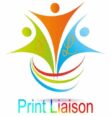| Comparison of printing methods | |||||
| Printing process | Transfer method | Ink thickness on the substrate | Notes | Cost-effective run length | |
| Offset printing | rollers | 0.5–1.5 µm | high print quality | >5,000 (A3 trim size, sheet-fed)[34 ] >30,000 (A3 trim size, web-fed)34 | |
| Rotogravure | rollers | 0.8–8 µm | thick ink layers possible, excellent image reproduction, edges of letters and lines are jagged[35] | >500,000[35] | |
| Flexography | rollers | 0.8–2.5 µm | high quality (now HD) | ||
| Letterpress printing | platen | 0.5–1.5 µm | slow drying | ||
| Screen-printing | pressing ink through holes in the screen | <12 µm | versatile method, low quality | ||
| Electrophotography | electrostatics | 5–10 µm | thick ink | ||
| Liquid Electrophotography | image formation by Electrostatics and transfer while fixing | High PQ, excellent image reproduction, wide range of media, very thin image | |||
| Inkjet printer | thermal | <0.5 µm | special paper required to reduce bleeding | <350 (A3 trim size) | |
| Inkjet printer | piezoelectric | <0.5 µm | special paper required to reduce bleeding | <350 (A3 trim size) | |
| Inkjet printer | continuous | <0.5 µm | special paper required to reduce bleeding | <350 (A3 trim size) | |
| Transfer-print | thermal transfer film or water release decal | mass-production method of applying an image to a curved or uneven surface | |||
| Letterpress printing is a technique of relief printing. A worker composes and locks movable type into the bed of a press, inks it, and presses paper against it to transfer the ink from the type which creates an impression on the paper. | |||||
| Offset printing is a widely used printing technique. Offset printing is where the inked image is transferred (or "offset") from a plate to a rubber blanket. An offset transfer moves the image to the printing surface. When used in combination with the lithographic process, a process based on the repulsion of oil and water; the offset technique employs a flat (planographic) image carrier. So, the image to be printed obtains ink from ink rollers, while the non-printing area attracts a film of water, keeping the non-printing areas ink-free. | |||||
| Gravure printing is an intaglio printing technique, where the image being printed is made up of small depressions in the surface of the printing plate. The cells are filled with ink, and the excess is scraped off the surface with a doctor blade. Then a rubber-covered roller presses paper onto the surface of the plate and into contact with the ink in the cells. The printing cylinders are usually made from copper plated steel, which is subsequently chromed, and may be produced by diamond engraving; etching, or laser ablation. | |||||
| Flexography is a type of relief printing.The relief plates are typically made from photopolymers. The process is used for flexible packaging, labels, newspapers.In this market it competes with gravure printing by holding 80% of the market in USA, 50% in Europe but only 20% in Asia | |||||
| Inkjet, used typically to print a small number of books or packaging, and also to print a variety of materials: from high quality papers simulating offset printing, to floor tiles. Inkjet is also used to apply mailing addresses to direct mail pieces | |||||
| Laser printing (toner printing) mainly used in offices and for transactional printing (bills, bank documents). Laser printing is commonly used by direct mail companies to create variable data letters or coupons. | |||||
| Pad printing, popular for its ability to print on complex three-dimensional surfaces | |||||
| Relief print, mainly used for catalogues | |||||
| Screen-printing for a variety of applications ranging from T-shirts to floor tiles, and on uneven surfaces | |||||
| Intaglio, used mainly for high-value documents such as currencies | |||||
